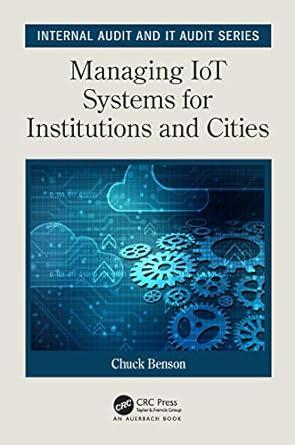Question
You have just been hired as a financial analyst for Lydex Company, a manufacturer of safety helmets. Your boss has asked you to perform a
You have just been hired as a financial analyst for Lydex Company, a manufacturer of safety helmets. Your boss has asked you to perform a comprehensive analysis of the companys financial statements, including comparing Lydexs performance to its major competitors. The companys financial statements for the last two years are as follows: Lydex Company Comparative Balance Sheet This Year Last Year Assets Current assets: Cash $ 1,010,000 $ 1,250,000 Marketable securities 0 300,000 Accounts receivable, net 2,900,000 2,000,000 Inventory 3,650,000 2,000,000 Prepaid expenses 270,000 210,000 Total current assets 7,830,000 5,760,000 Plant and equipment, net 9,620,000 9,100,000 Total assets $ 17,450,000 $ 14,860,000 Liabilities and Stockholders' Equity Liabilities: Current liabilities $ 4,060,000 $ 3,080,000 Note payable, 10% 3,700,000 3,100,000 Total liabilities 7,760,000 6,180,000 Stockholders' equity: Common stock, $70 par value 7,000,000 7,000,000 Retained earnings 2,690,000 1,680,000 Total stockholders' equity 9,690,000 8,680,000 Total liabilities and stockholders' equity $ 17,450,000 $ 14,860,000 Lydex Company Comparative Income Statement and Reconciliation This Year Last Year Sales (all on account) $ 15,910,000 $ 14,080,000 Cost of goods sold 12,728,000 10,560,000 Gross margin 3,182,000 3,520,000 Selling and administrative expenses 912,000 1,624,000 Net operating income 2,270,000 1,896,000 Interest expense 370,000 310,000 Net income before taxes 1,900,000 1,586,000 Income taxes (30%) 570,000 475,800 Net income 1,330,000 1,110,200 Common dividends 320,000 555,100 Net income retained 1,010,000 555,100 Beginning retained earnings 1,680,000 1,124,900 Ending retained earnings $ 2,690,000 $ 1,680,000 To begin your assigment you gather the following financial data and ratios that are typical of companies in Lydex Companys industry: Current ratio 2.3 Acid-test ratio 1.1 Average collection period 32 days Average sale period 60 days Return on assets 9.8 % Debt-to-equity ratio .66 Times interest earned ratio 5.8 Price-earnings ratio 10 rev: 09_17_2014_QC_54324, 12_11_2014_QC_CS-386 Garrison 15e Recheck 2015-1-19 6.value: 10.00 pointsRequired information Required: 1. You decide first to assess the companys performance in terms of debt management and profitability. Compute the following for both this year and last year: (Round your intermediate calculations and final percentage answers to 1 decimal place. i.e., 0.123 should be considered as 12.3%. Round the rest of the intermediate calculations and final answers to 2 decimal places.) a. The times interest earned ratio. b. The debt-to-equity ratio. c. The gross margin percentage. d. The return on total assets. (Total assets at the beginning of last year were $13,120,000.) e. The return on equity. (Stockholders equity at the beginning of last year totaled $8,124,900. There has been no change in common stock over the last two years.) f. Is the companys financial leverage positive or negative? rev: 09_17_2014_QC_54324 ReferenceseBook & Resources WorksheetLearning Objective: 15-03 Compute and interpret financial ratios that managers use for asset management purposes.Learning Objective: 15-06 Compute and interpret financial ratios that managers use to assess market performance. Difficulty: 1 EasyLearning Objective: 15-04 Compute and interpret financial ratios that managers use for debt management purposes. Learning Objective: 15-02 Compute and interpret financial ratios that managers use to assess liquidity.Learning Objective: 15-05 Compute and interpret financial ratios that managers use to assess profitability. Check my work 7.value: 10.00 pointsRequired information 2. You decide next to assess the companys stock market performance. Assume that Lydexs stock price at the end of this year is $104 per share and that at the end of last year it was $72. For both this year and last year, compute: (Round your intermediate calculations and final percentage answers to 1 decimal place. i.e., 0.123 should be considered as 12.3%. Round the rest of the intermediate calculations and final answers to 2 decimal places.) a. The earnings per share. b. The dividend yield ratio. c. The dividend payout ratio. d. The price-earnings ratio. e. The book value per share of common stock. rev: 09_17_2014_QC_54324 Garrison 15e Recheck 2015-1-22 ReferenceseBook & Resources WorksheetLearning Objective: 15-03 Compute and interpret financial ratios that managers use for asset management purposes.Learning Objective: 15-06 Compute and interpret financial ratios that managers use to assess market performance. Difficulty: 1 EasyLearning Objective: 15-04 Compute and interpret financial ratios that managers use for debt management purposes. Learning Objective: 15-02 Compute and interpret financial ratios that managers use to assess liquidity.Learning Objective: 15-05 Compute and interpret financial ratios that managers use to assess profitability. Check my work 8.value: 10.00 pointsRequired information 3. You decide, finally, to assess the companys liquidity and asset management. For both this year and last year, compute: (Use 365 days in a year. Round your intermediate calculations and final answer to 2 decimal places.) a. Working capital. b. The current ratio. c. The acid-test ratio. d. The average collection period. (The accounts receivable at the beginning of last year totaled $1,720,000.) e. The average sale period. (The inventory at the beginning of last year totaled $2,080,000.) f. The operating cycle. g. The total asset turnover. (The total assets at the beginning of last year totaled $14,660,000.)
Step by Step Solution
There are 3 Steps involved in it
Step: 1

Get Instant Access to Expert-Tailored Solutions
See step-by-step solutions with expert insights and AI powered tools for academic success
Step: 2

Step: 3

Ace Your Homework with AI
Get the answers you need in no time with our AI-driven, step-by-step assistance
Get Started


